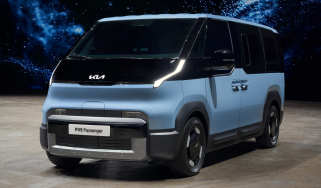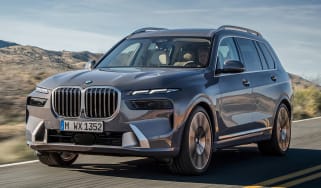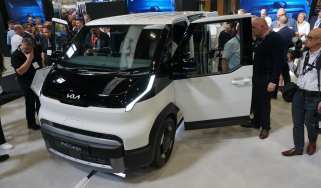Citroen C4 - MPG, CO2 and running costs
The efficiency of the Citroen C4 and electric e-C4 is pretty good, but depreciation is steeper than some rivals

While the Citroen C4 has been refreshed on the outside, the powertrains available are familiar – although there is now no option of a six-speed manual for the PureTech petrol unit. The PureTech 130 three-cylinder, with its eight-speed automatic and stop-start technology, helps it reach a combined 50.7mpg with CO2 emissions standing at 131g/km.
The 48V mild-hybrid system of the Hybrid 136, meanwhile, isn’t just a token gesture towards lowering emissions, producing 107g/km in comparison. Citroen also claims up to 50 per cent of your driving can be done on electric power alone. While we think Citroen’s claim is optimistic, we found the mild-hybrid system chimed in quite regularly when cruising or during slow-speed manoeuvres.
The system on the Hybrid 100 matches the Hybrid 136 for emissions and economy, with both returning an average of 62.1mpg. For a mild-hybrid that’s not too shabby, and certainly helped by those aforementioned skinny tyres – which are even thinner than those on the C3 Aircross.
Company car drivers and those especially concerned by emissions might be better served by the all-electric e-C4, which is offered with 50kWh and 54kWh batteries. Both are in a lower Benefit-in-Kind (BiK) tax band than the Hybrid or petrol-only versions of C4.
| Model | MPG | CO2 | Insurance group |
| Citroen C4 Hybrid 136 | 62.1mpg | 107g/km | TBC |
| Citroen C4 PureTech | 50.7mpg | 131g/km | TBC |
| Citroen C4 Hybrid 100 | 62.1mpg | 107g/km | TBC |
Electric range, battery and charging
The e-C4 electric hatchback is offered with a choice of 50kWh and 54kWh batteries. The former allows for a maximum range of 219 miles, while the larger unit boosts the car’s range to 257 miles. The slipperier e-C4 X extends this to 222 miles with the 50kWh battery and 263 miles for the 54kWh version.
We’ve yet to test the 54kWh e-C4, but we covered more than 3,200 miles in a pre-facelift 50kWh e-C4 long-term test car and averaged 3.2 miles per kWh. That equates to a real-world range of 160 miles on a full charge.
Speaking of which, the e-C4 has a maximum charging speed of 100kW, which allows for a 10 to 80 per cent charge in half an hour for both versions, while a typical 7.4kW home wallbox will fully charge either version in around 7.5 hours.
| Model | Battery size | Range | Insurance group |
| Citroen e-C4 50kWh | 50kWh | 219 miles | TBC |
| Citroen e-C4 54kWh | 54kWh | 257 miles | TBC |
Depreciation
According to our expert data, the facelifted Citroen C4 in petrol and hybrid form is expected to hold on to around 45 per cent of its original value after three years or 36,000 miles; the all-electric e-C4 fares a bit worse at just 37 per cent.
To get an accurate valuation for a specific model, check out our valuation tool...










